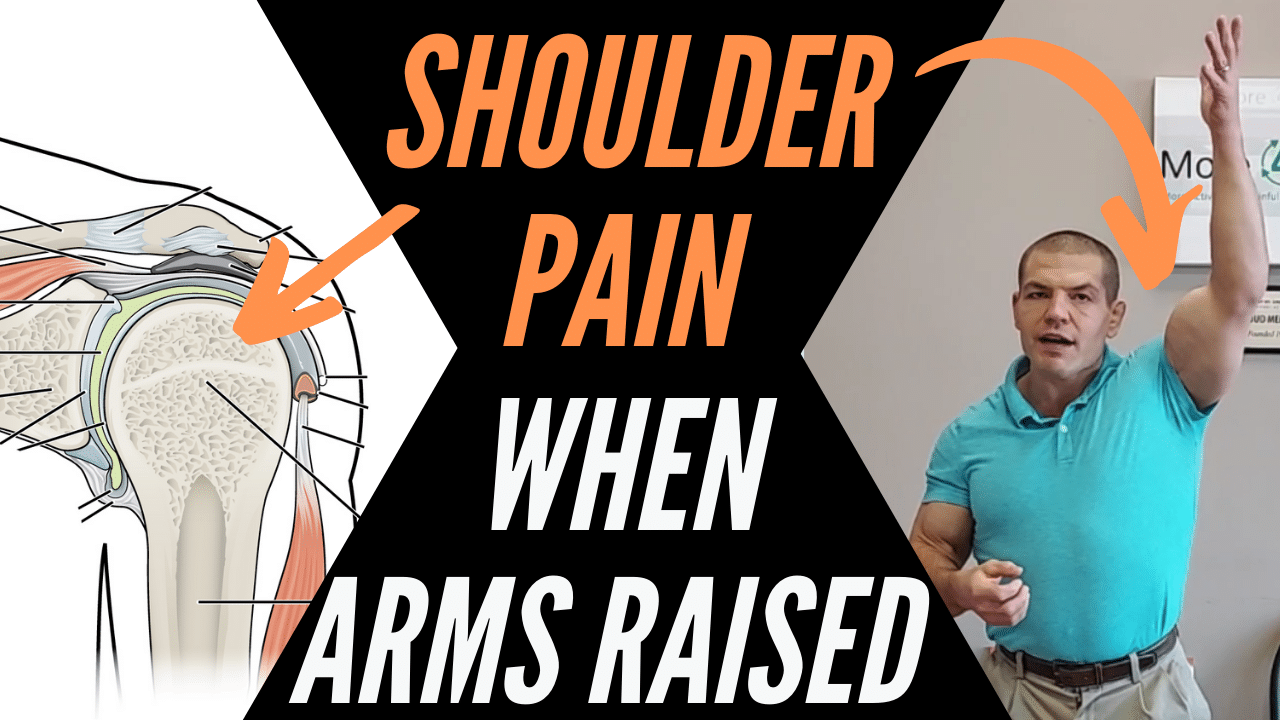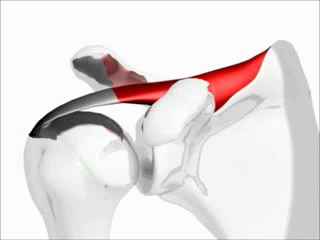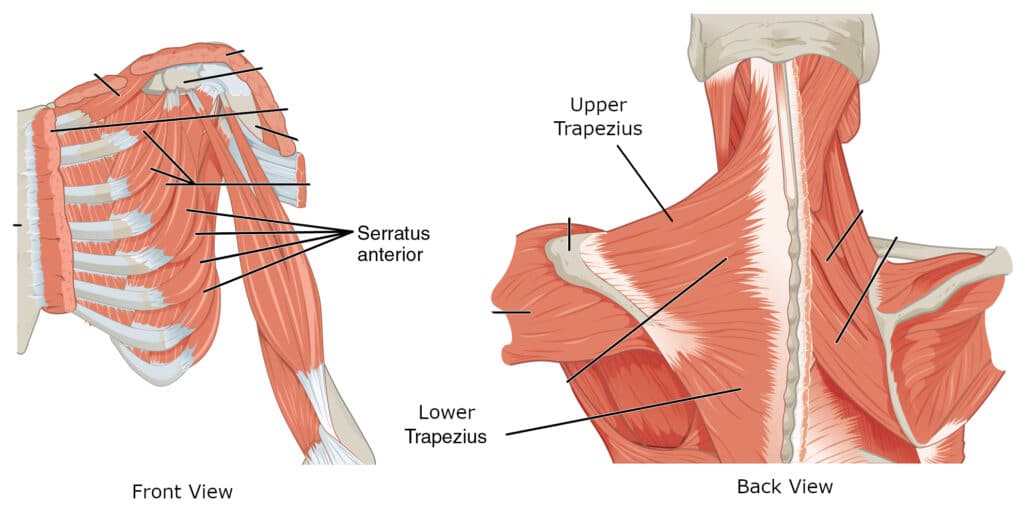Do You Get Shoulder Pain When Your Arms Are Raised?
The simple tips in this video will help you prevent shoulder pain when your arms are raised.

What Causes Shoulder Pain When Your Arm Is Raised?
Your shoulder is a ball and socket joint where the ball (humeral head) rotates in the socket (glenoid fossa) as you raise your arm overhead or out to the side.
The problem is, that the ball isn't a perfectly round ball. As you can see in the picture above, there are some bumps on the ball of the shoulder.
If the ball isn't positioned correctly in the socket, the bumps on the "ball" of the shoulder can pinch the rotator cuff tendons on the arch of bone and tendons that lies over the top of the socket.
What Factors Affect Pinching Of The Rotator Cuff Tendons When Raising Your Arm?
Largely, there are 2 movement factors that affect shoulder pain when your arms are raised:
-
The orientation of the ball of the shoulder in the socket.
-
The way the shoulder blade moves as you raise your arms.
Position Of The Ball Of The Shoulder In The Socket
When your shoulder is internally rotated (twisted inward), this causes the bump on the ball (greater tuberosity) to move underneath the arch of bone and ligaments that's over the socket of the shoulder.
As you raise your arm upward with the arm internally rotated, you end up pinching the rotator cuff tendons. This can cause shoulder pain when your arm is raised.
How To Position The Ball Of The Shoulder Correctly In The Socket When Raising Your Arm
If you reach upward with your thumb up, this puts the shoulder in external rotation and moves the bump (greater tuberosity) on the ball of the shoulder out from under the arch of the shoulder.
This in turn prevents pinching of the rotator cuff tendons as you raise your arm. Think "thumbs up for success".
Need Help For Shoulder Pain When Raising Your Arm?
Request a Free Shoulder Pain Discovery Visit to learn how we can help your shoulder pain
Movement Of The Shoulder Blade When Raising Your Arm
The movement of raising your arm actually consist of movement at several different joints. Roughly put, 2/3rds of the motion when raising your arm should come from the ball-and-socket joint of the shoulder while the other 1/3rd of the movement should come from the shoulder blade moving on the trunk.
Your shoulder blade should rotate upwards as you raise your arm overhead. This raises the arch over the shoulder and prevents pinching of the rotator cuff tendons underneath the arch.
Why Might My Shoulder Blade Move Incorrectly When Raising My Arm?
There are several different muscles that affect the movement of your shoulder blade as you raise your arm.
The muscles that affect movement of the shoulder blade when raising your arm are the:
-
Serratus Anterior
-
Upper Trapezius
-
Lower Trapezius
These 3 muscles work together to rotate the shoulder blade upward as you raise your arm. See the video below.
If these muscles don't work properly together to raise your shoulder blade as you raise your arm upward, then you can pinch the rotator cuff muscles under the arch of the shoulder, thus causing pain on the front of the shoulder.
Additionally, if you use too much of the upper trapezius and not enough of the other 2 muscles, that can cause neck pain.
Finally, if certain muscles in your neck and upper back are too stiff, they might limit how well your shoulder blade can move. If that's the case, these neck and shoulder pain stretches might help.
How Do You Get Your Shoulder Blade To Move Properly When Raising Your Arms?
Think about moving your shoulder blade away from your spine as you raise your arm.
When reaching upward, think about reaching up and forward moving your shoulder blade and arm together as shown in the video above.
When raising your arm out to the side, make a long arc with your arm so that your shoulder blade moves away from spine.
Take Home Points
To be able to raise your arm without shoulder pain:
- Thumbs up for success
- Move your shoulder blade along with your arm.
Need More Help For Shoulder Pain?
Talk to one of our Specialists to learn how we can help.
Like this post? See our other posts on Shoulder Pain
Help! My Shoulder Hurts After Sleeping





